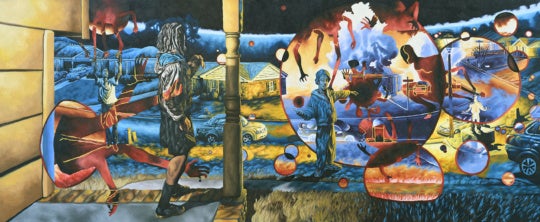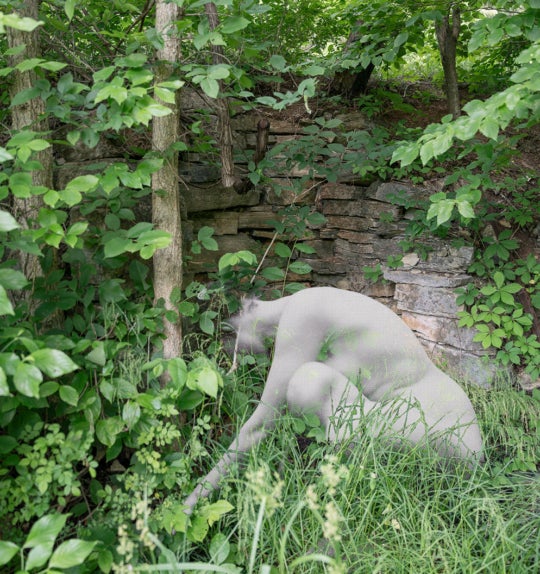
Brian McGrath Davis has been researching and photographing Emory’s Briarcliff Campus, “a forgotten place in Atlanta’s story,” assiduously for the past three years. Slated for partial demolition to make room for new construction, the place that is now Emory’s Briarcliff Campus was once the aristocratic estate of Asa Candler, Jr., the DeKalb Addiction Recover Center, and the Georgia Mental Health Institute.
Davis is a Ph.D candidate in Emory’s (recently discontinued) Graduate Institute of Liberal Arts, a unique interdisciplinary doctoral program here in Atlanta. While Davis ‘s project includes many photographs of the entire campus, today he is sharing a select few from a group called The Briarcliff Bulletin Boards.
In this series, he documents the residue of bulletin board activity in Building A of the old Georgia Mental Health Institute, which was is now partially used by several Emory programs. Bulletin boards are typically meant for announcements or information sharing—so while these directly depict one part of the progressive depopulation and abandonment of Briarcliff, the photographs also speak to the changing value and relevance of physical signage as we rely more on the internet and social media as our primary mode of communication. In Davis’s words, the bulletin boards “say something about present-absences and absent-presences.”

Although Davis has photographed boards that are still full of postings and apparently in use, viewable on his blog, the empty boards have a particular resonance. While the photographs of bulletin boards may, on occasion, exude a gloomy sparseness or foreboding, there is no real sense of desolation or ruin. Looking carefully at these images of shadows, traces and imprints there is no sign of permanent abandonment despite what we know about Emory’s Briarcliff Campus. It seems possible that at any moment someone might reappear and reclaim the open boards.

“What’s most interesting is how the punctuated absence of information is in fact a profound presence of a different sort of information, just as the positive presences indirectly indicate what is no longer part of the story, the absences. The bulletin boards are a unique cypher for studying the use of this place and its overall narrative.”
– Brian McGrath Davis
Davis’s photographs are reminiscent of Mexico City based artist Alejandra Laviada’s De-Constructions: A project where the artist tore into the walls of a historic building scheduled for demolition in the center of Mexico City. The coats of colored paint and dry wall texture indicate the passage of time and the layers of transition within the city’s center.


For more photographs or information about Davis’s research and photographs, visit The Briarcliff Document.
Brian McGrath Davis is a doctoral candidate at Emory University in the Graduate Institute of Liberal Arts. His dissertation project, The Briarcliff Document, is a historical, photographic, and place-centered study of Emory’s Briarcliff Campus. Brian is a documentary photographer based out of Atlanta.
House rules for commenting:
1. Please use a full first name. We do not support hiding behind anonymity.
2. All comments on BURNAWAY are moderated. Please be patient—we’ll do our best to keep up, but sometimes it may take us a bit to get to all of them.
3. BURNAWAY reserves the right to refuse or reject comments.
4. We support critically engaged arguments (both positive and negative), but please don’t be a jerk, ok? Comments should never be personally offensive in nature.




